Peruvian Breads - today and tomorrow only! (1/3)
We're on Facebook too!
English version.
Encuentre la versión en español AQUÍ.
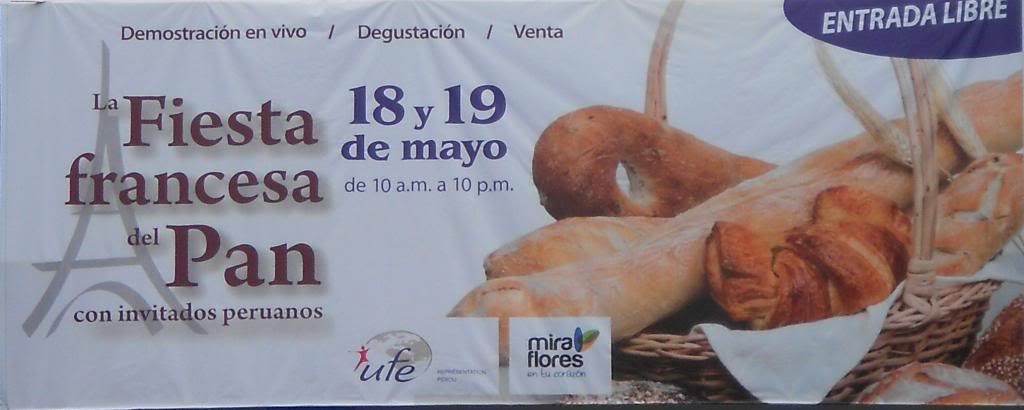
Map HERE
COLCA BREAD
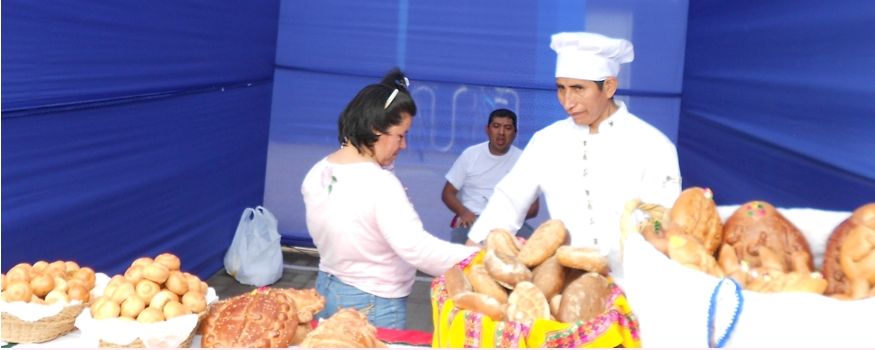
- Your name, please?
- My name is Damasino Anco.
- Where are you from, Mr. Damasino?
- Well, I come from Ichupampa, one of the twenty towns in the beautiful Colca Canyon. On this occasion, Mrs. Mary Fran Catelano sent me a cordial invitation, and just as cordially we are here to exhibit the artisan-made breads from the Innermost Peru.
- How did you become interested in bread baking?
- Since I was a very small child. When I was six, my grandmother taught me to make the ‘wawas’. Once I came to Lima, I never dreamed to become a bread baker, much less with his own recipe in the Universal Bread Diccionary, edited in France.
- Congratulations!
- Yes. It was edited three years ago, and has yet to arrive in Peru.
- From what I see here, what’s new?
- Kañiwa bread.
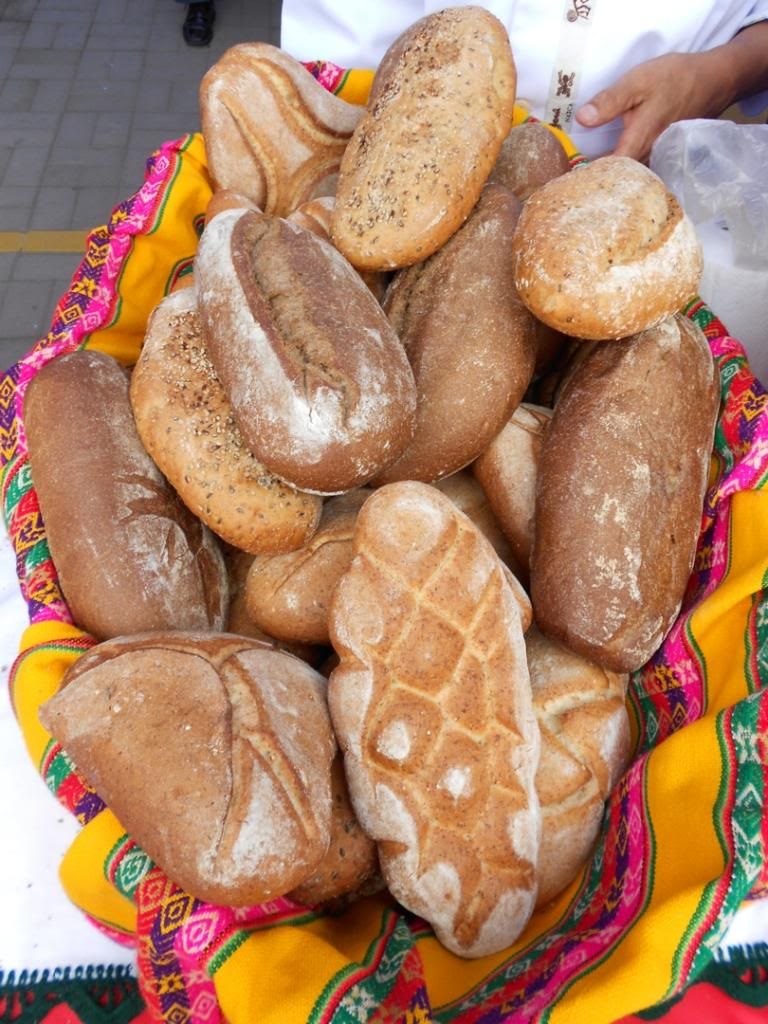
Click to enlarge.
- Kañiwa in bread? Please explain to us what kañiwa is.
- Kañiwa is a grain that grows above 4000 meters above sea level, in the high grounds of Puno and Cusco. Farmers grow it for self-sustenance; though there are already farmers who are growing it to sell, but they prefer to sell it abroad, thus making the price more expensive in the local market.
- I see. And which bread do you like the best?
- From childhood I’ve been eating kañiwa - but not in bread; just as usual, in a ‘kañihuaco’. But now, as a bread baker, I am innovating with kañiwa bread.
- Wonderful. Now, a small invitation to this event?
- Sure! I invite everybody to come today and tomorrow to the Bread French Fest. We will be offering bread tasting, of kañihua bread, and quinua bread, and of other grains - nutritional breads. And the tantawawas, a special bread made for rituals such as the one on November 1st (All Saints’ Day.)
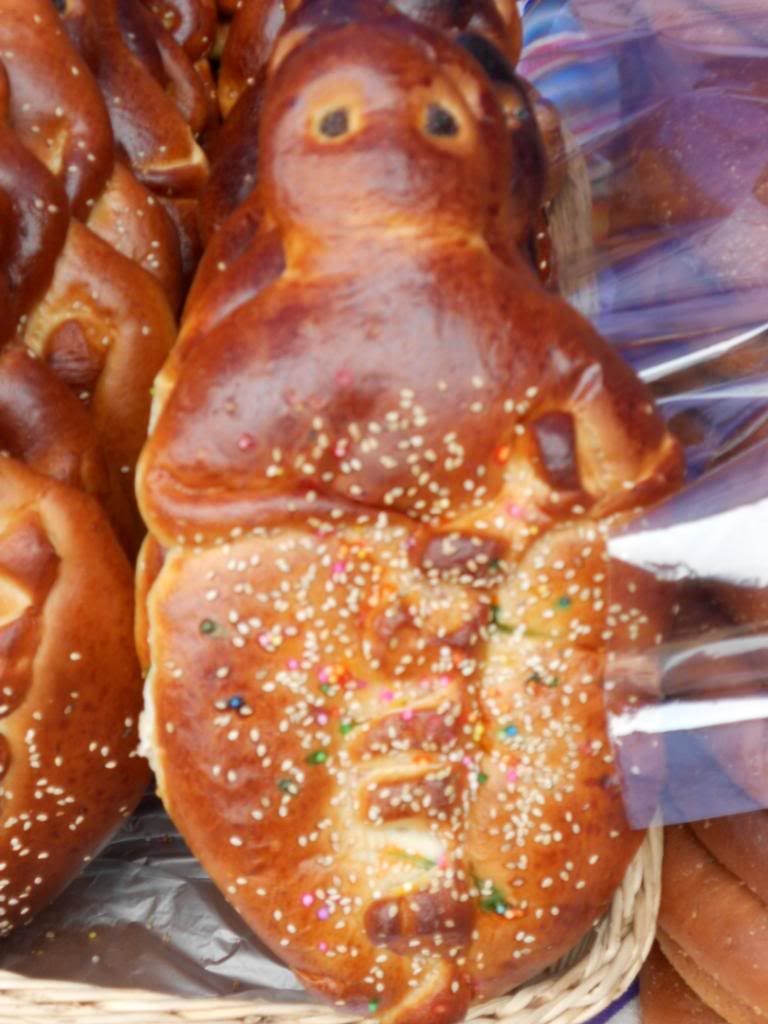
Click to enlarge.
JAUJA BREAD
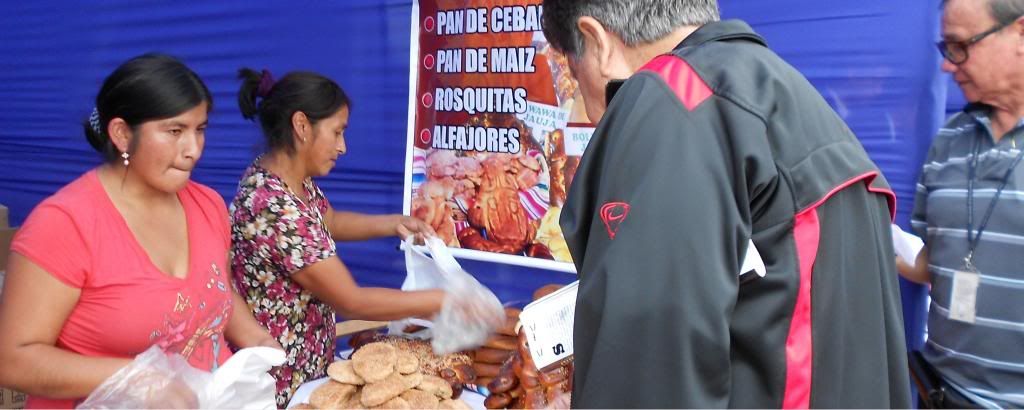
These breads are a tradition from Jauja. And among these breads from Jauja, we have brought innovations that are based in flours made from cereals, such as kiwicha, quinua, and wheat.
These three cereals are produced over there, right?
Yes, in Jauja itself.
Are you part of the production of these?
Yes. I am part of this. My husband and I.
I see, a family business.
Yes… us, and some family: nephews and nieces.
And how did you make it to the fair today?
Well, in truth we came because of an invitation, a direct invitation.
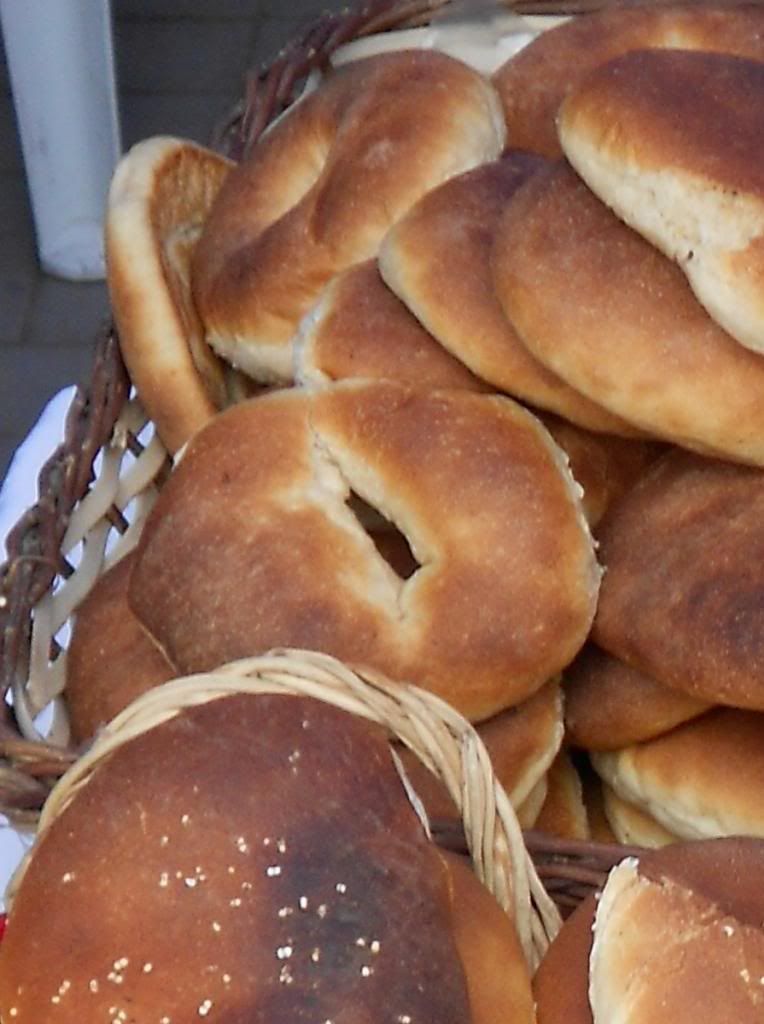
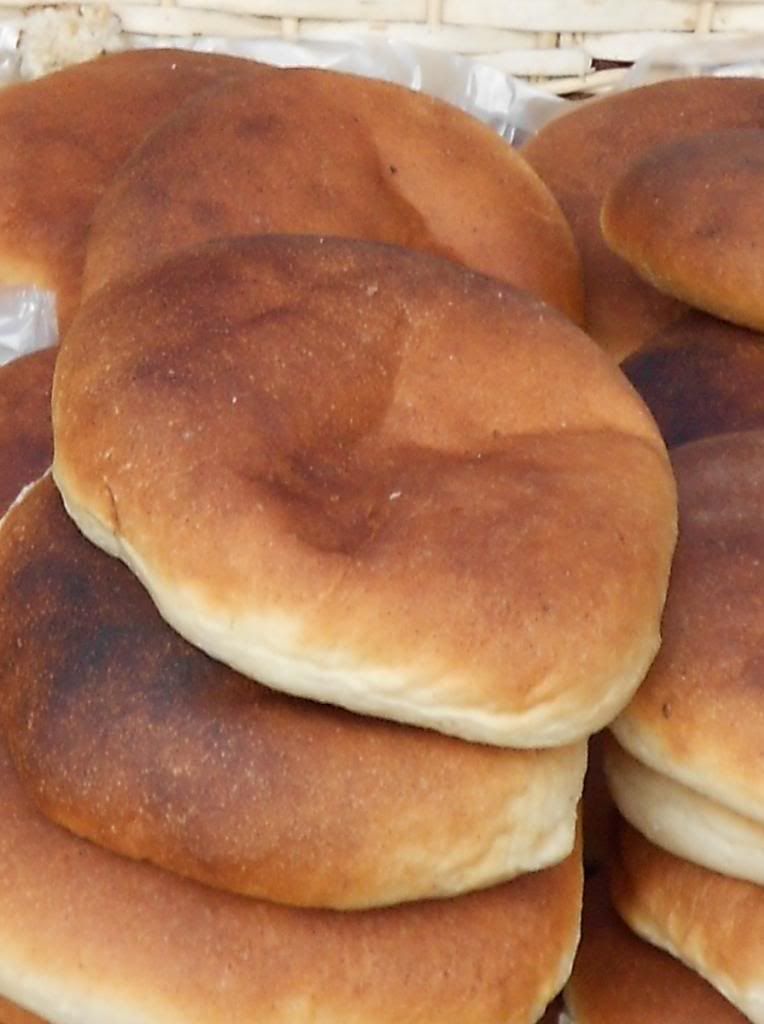
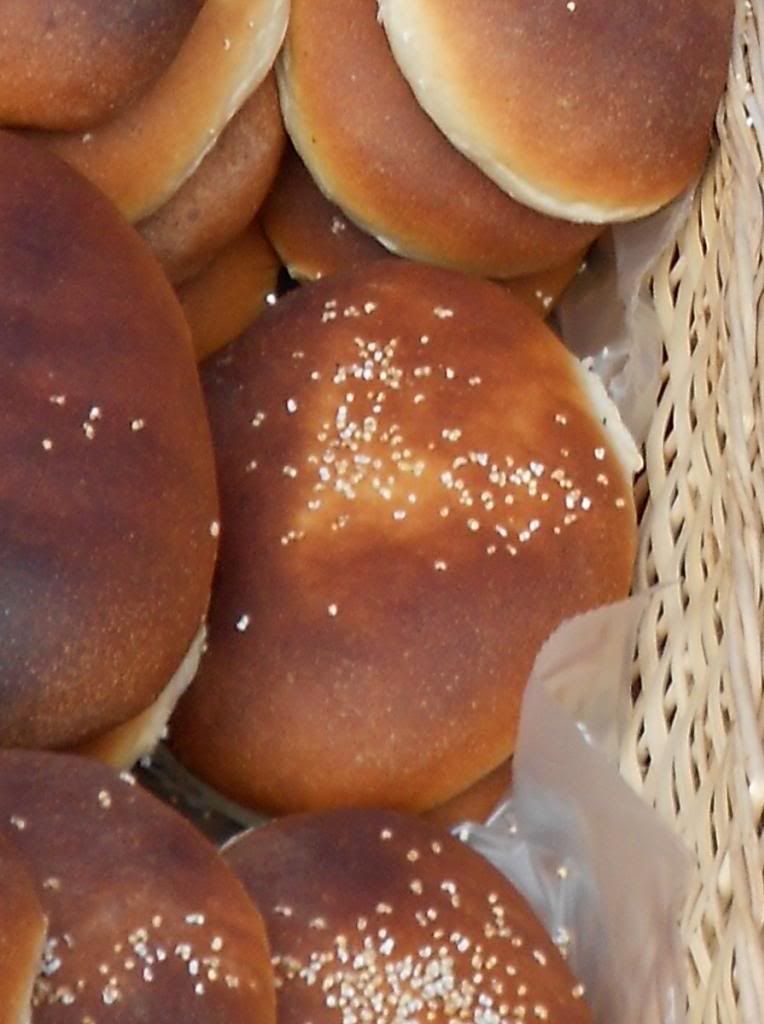
Click to enlarge.
Is there a place in Lima where we can find you on other days, or just in Jauja?
Only in fairs. You don’t see me down here otherwise. Well, fairs and patron saint festivals in the centre of Lima city. You can find us around there.
What’s your specialty?
My specialty is sweet breads. For example the maicillos… and the bread, of course, that are traditional: the wawas. There are other breads; those over there, for example, are ‘water bread’ which identify Jauja. Mostly we know them as ‘egg bread’ - but there’s no eggs in them! (laughs) There’s a story behind that.
Tell us the story!
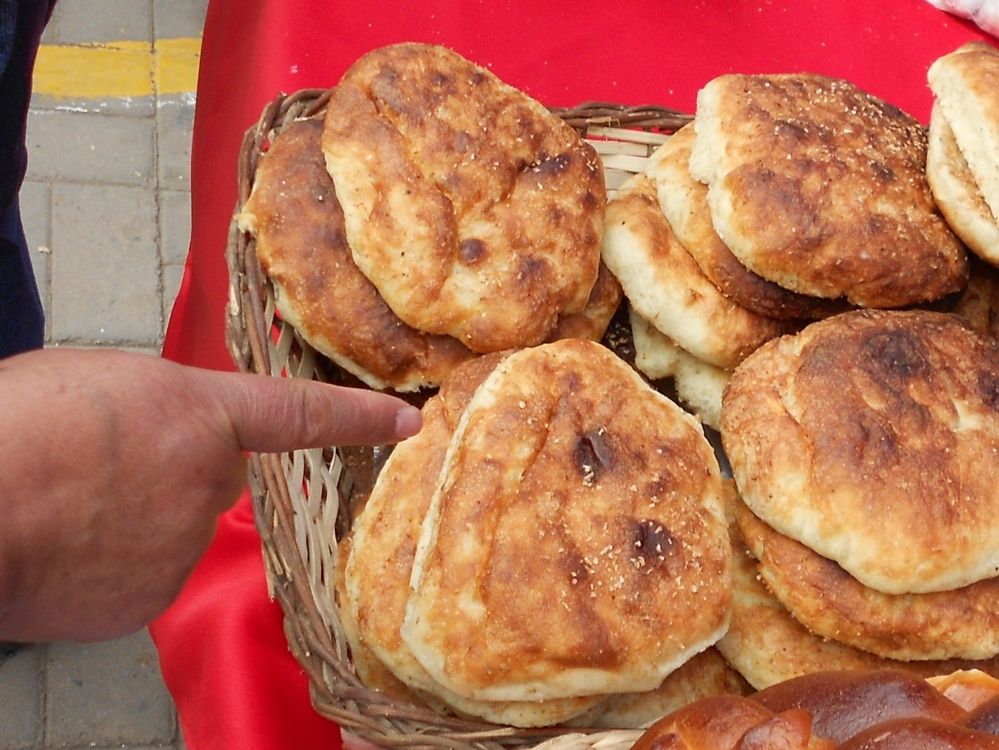
Click to enlarge.
Look, that bread is called ‘egg bread’ over there, in Jauja. Long ago, the bread bakers of old would take that bread on their donkeys or their mules; they’d take them up to the heights and trade them for eggs. That’s why they got the name: ‘egg bread’, even though they have no eggs.
How funny! Thank you for the story. Now, an invitation for the fair?
Sure. That everybody in Lima will come to buy our bread. This bread is artisan-made, which lasts longer. They are made of quinua flour, and wheat flour. Do come!

CONCEPCION BREAD
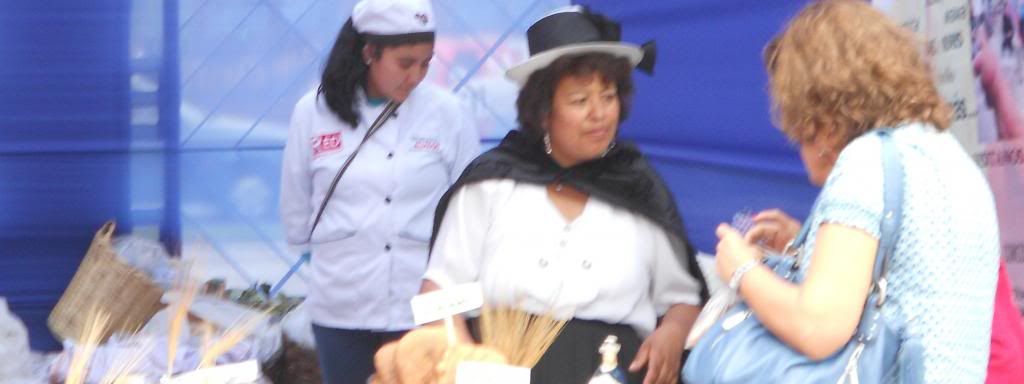
- Good afternoon. All of you come from Concepción. Concepción is in…
- In the Junin region; Concepción is a province of Junin.
- This bakery is from over there, or is it in Lima but it has its roots in Concepcion?
- No, it’s from over there. We have come bringing all our products. That means that all this bread has been baked in wood ovens. It’s artisan-made; it’s natural. It’s been made with ingredients wholly from our area.
- What kind of ingredients are these?
- Wheat flour, from the region. There they harvest the wheat; they grind it…
- So the production of flour takes place right there.
- Yes. Also, artichoke bread, which is a real feat. Because over there, in the Mantaro Valley, we are rich in artichoke bread. Therefore, we produce the bread with the fruity section of the artichoke. This is the bread that won at Mistura the year before last, and now we have come here so that everybody can taste all our bread, all the variety that we make in Concepcion.
- Elvira, what’s your favorite among these?
- From these, the anise bread, which has been around for 400 years! And my artichoke bread, because I’ve been part of those who invented this bread - who innovated this bread.
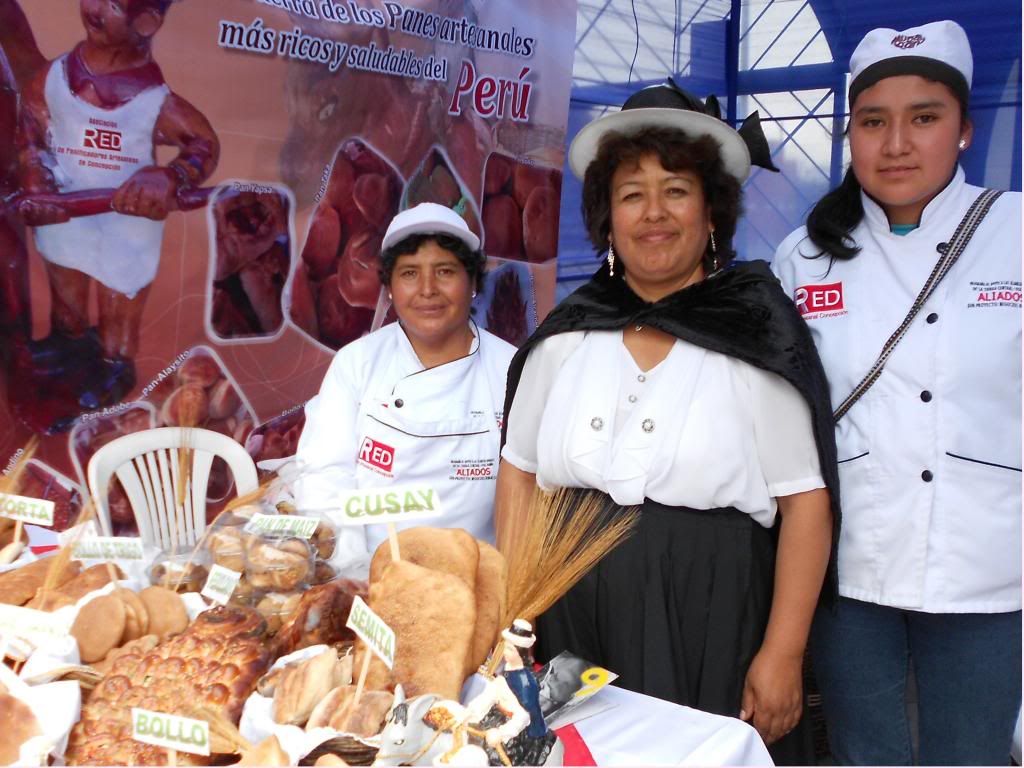
- Are you part of San Roque bakery?
- Yes. And each of my partners here has their own bakery. But we are a group that goes together to all the fairs, all the festivities where we are invited…
- I was going there. Where can we find you? Is it possible to find artichoke bread in Lima?
- No, because we have nowhere to sell it here. We don’t have a place, a store. And also, we have to make it there, because our ovens are special, handmade, using eucalyptus wood… and the water! Our water is so fresh, so rich.
- In that case, how can one find artichoke bread when there’s no fair?
- Artichoke bread…
(laughs)
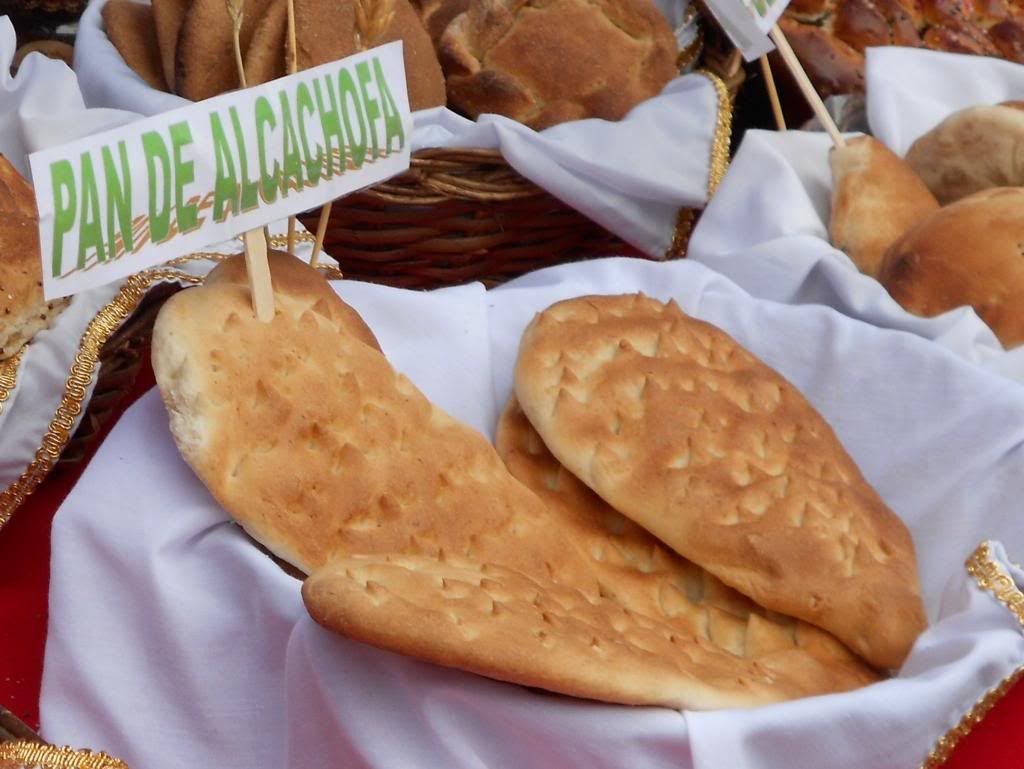
Click to enlarge.
- All the way to Concepcion!
- All the way to Concepcion, you’d have to go visit.
- Well. Tell us where in Concepcion we can find you.
- In Concepcion, we are by the park. We have an Anise Bread House, right next to the municipality. There you can find the entire variety, and every day! And once there, you can visit the Virgin - the tallest and prettiest Holy Virgin in Peru.
- How many hours is it from Lima to Concepcion?
- Five, six hours. On the bus. If you’re driving, it takes four hours. It’s pretty close, and Concepcion is a pretty city, very beautiful; an ecological city.
- I hope that I’ll be able to visit - and eat that bread fresh from the oven!
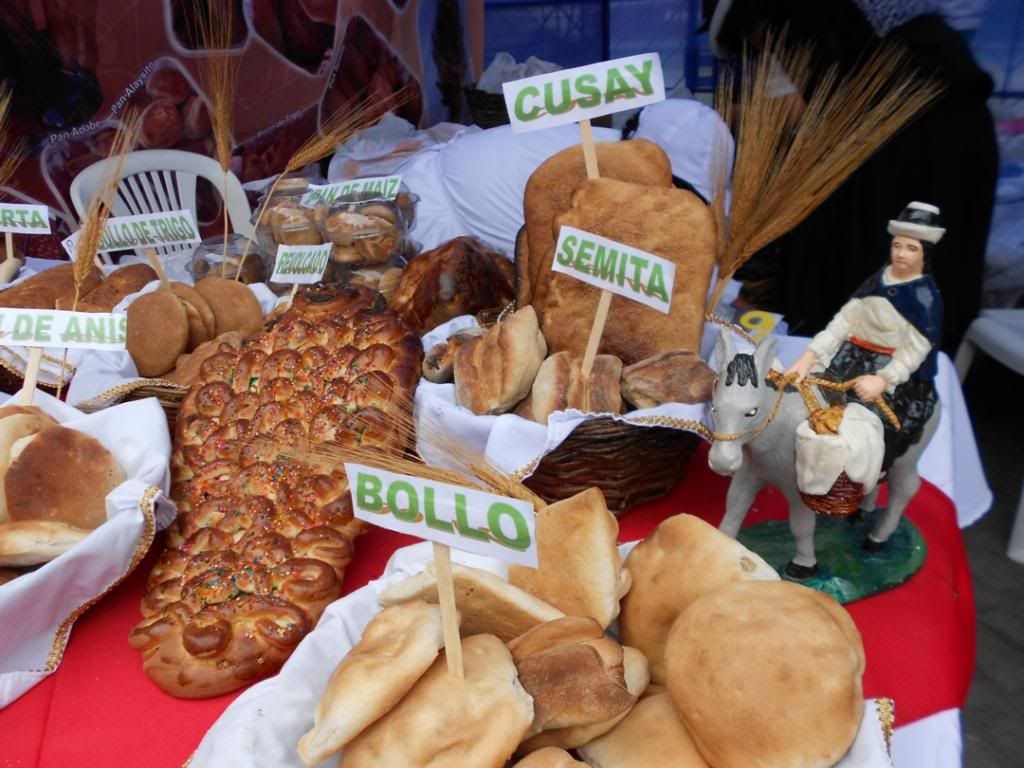
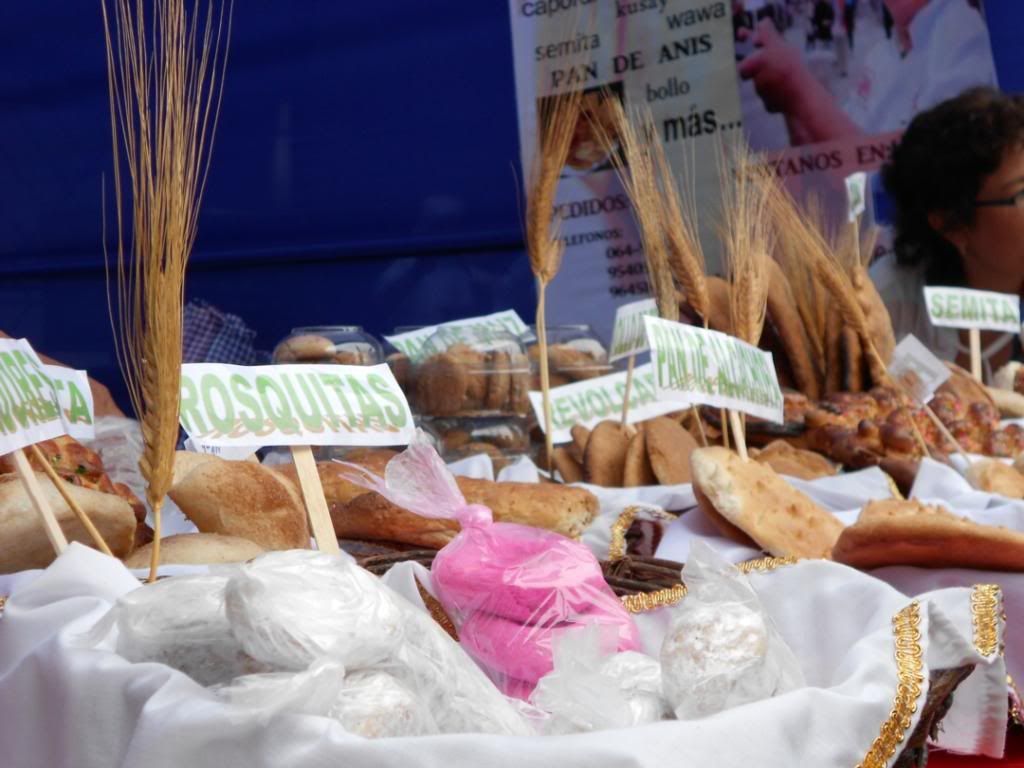
Click to enlarge.
- We’ll be glad to have you, and then you’ll be able to see that I’m not lying, that I’m right and not telling these things just because it’s my home, but because Concepcion is really like that. The people is so nice, and the water… The sky! So blue! Because one cannot really see it here, can we?
- True, true. Now, an invitation for tomorrow?
- Well, we invite you to come taste this delicious bread from the mountains, from my province: Concepcion. Come eat, because you’ll still find them! We have brought enough bread to last today and tomorrow. Come taste it, and see that it’s different to what we could make here.
Also, I’d like the opportunity to thank the association that invites us to every event, so that we can offer our products to you.
¡Visítennos en Facebook!
We're on Facebook too!
English version.
Encuentre la versión en español AQUÍ.

Map HERE
COLCA BREAD

- Your name, please?
- My name is Damasino Anco.
- Where are you from, Mr. Damasino?
- Well, I come from Ichupampa, one of the twenty towns in the beautiful Colca Canyon. On this occasion, Mrs. Mary Fran Catelano sent me a cordial invitation, and just as cordially we are here to exhibit the artisan-made breads from the Innermost Peru.
- How did you become interested in bread baking?
- Since I was a very small child. When I was six, my grandmother taught me to make the ‘wawas’. Once I came to Lima, I never dreamed to become a bread baker, much less with his own recipe in the Universal Bread Diccionary, edited in France.
- Congratulations!
- Yes. It was edited three years ago, and has yet to arrive in Peru.
- From what I see here, what’s new?
- Kañiwa bread.

Click to enlarge.
- Kañiwa in bread? Please explain to us what kañiwa is.
- Kañiwa is a grain that grows above 4000 meters above sea level, in the high grounds of Puno and Cusco. Farmers grow it for self-sustenance; though there are already farmers who are growing it to sell, but they prefer to sell it abroad, thus making the price more expensive in the local market.
- I see. And which bread do you like the best?
- From childhood I’ve been eating kañiwa - but not in bread; just as usual, in a ‘kañihuaco’. But now, as a bread baker, I am innovating with kañiwa bread.
- Wonderful. Now, a small invitation to this event?
- Sure! I invite everybody to come today and tomorrow to the Bread French Fest. We will be offering bread tasting, of kañihua bread, and quinua bread, and of other grains - nutritional breads. And the tantawawas, a special bread made for rituals such as the one on November 1st (All Saints’ Day.)

Click to enlarge.
JAUJA BREAD

These breads are a tradition from Jauja. And among these breads from Jauja, we have brought innovations that are based in flours made from cereals, such as kiwicha, quinua, and wheat.
These three cereals are produced over there, right?
Yes, in Jauja itself.
Are you part of the production of these?
Yes. I am part of this. My husband and I.
I see, a family business.
Yes… us, and some family: nephews and nieces.
And how did you make it to the fair today?
Well, in truth we came because of an invitation, a direct invitation.



Click to enlarge.
Is there a place in Lima where we can find you on other days, or just in Jauja?
Only in fairs. You don’t see me down here otherwise. Well, fairs and patron saint festivals in the centre of Lima city. You can find us around there.
What’s your specialty?
My specialty is sweet breads. For example the maicillos… and the bread, of course, that are traditional: the wawas. There are other breads; those over there, for example, are ‘water bread’ which identify Jauja. Mostly we know them as ‘egg bread’ - but there’s no eggs in them! (laughs) There’s a story behind that.
Tell us the story!

Click to enlarge.
Look, that bread is called ‘egg bread’ over there, in Jauja. Long ago, the bread bakers of old would take that bread on their donkeys or their mules; they’d take them up to the heights and trade them for eggs. That’s why they got the name: ‘egg bread’, even though they have no eggs.
How funny! Thank you for the story. Now, an invitation for the fair?
Sure. That everybody in Lima will come to buy our bread. This bread is artisan-made, which lasts longer. They are made of quinua flour, and wheat flour. Do come!

CONCEPCION BREAD

- Good afternoon. All of you come from Concepción. Concepción is in…
- In the Junin region; Concepción is a province of Junin.
- This bakery is from over there, or is it in Lima but it has its roots in Concepcion?
- No, it’s from over there. We have come bringing all our products. That means that all this bread has been baked in wood ovens. It’s artisan-made; it’s natural. It’s been made with ingredients wholly from our area.
- What kind of ingredients are these?
- Wheat flour, from the region. There they harvest the wheat; they grind it…
- So the production of flour takes place right there.
- Yes. Also, artichoke bread, which is a real feat. Because over there, in the Mantaro Valley, we are rich in artichoke bread. Therefore, we produce the bread with the fruity section of the artichoke. This is the bread that won at Mistura the year before last, and now we have come here so that everybody can taste all our bread, all the variety that we make in Concepcion.
- Elvira, what’s your favorite among these?
- From these, the anise bread, which has been around for 400 years! And my artichoke bread, because I’ve been part of those who invented this bread - who innovated this bread.

- Are you part of San Roque bakery?
- Yes. And each of my partners here has their own bakery. But we are a group that goes together to all the fairs, all the festivities where we are invited…
- I was going there. Where can we find you? Is it possible to find artichoke bread in Lima?
- No, because we have nowhere to sell it here. We don’t have a place, a store. And also, we have to make it there, because our ovens are special, handmade, using eucalyptus wood… and the water! Our water is so fresh, so rich.
- In that case, how can one find artichoke bread when there’s no fair?
- Artichoke bread…
(laughs)

Click to enlarge.
- All the way to Concepcion!
- All the way to Concepcion, you’d have to go visit.
- Well. Tell us where in Concepcion we can find you.
- In Concepcion, we are by the park. We have an Anise Bread House, right next to the municipality. There you can find the entire variety, and every day! And once there, you can visit the Virgin - the tallest and prettiest Holy Virgin in Peru.
- How many hours is it from Lima to Concepcion?
- Five, six hours. On the bus. If you’re driving, it takes four hours. It’s pretty close, and Concepcion is a pretty city, very beautiful; an ecological city.
- I hope that I’ll be able to visit - and eat that bread fresh from the oven!


Click to enlarge.
- We’ll be glad to have you, and then you’ll be able to see that I’m not lying, that I’m right and not telling these things just because it’s my home, but because Concepcion is really like that. The people is so nice, and the water… The sky! So blue! Because one cannot really see it here, can we?
- True, true. Now, an invitation for tomorrow?
- Well, we invite you to come taste this delicious bread from the mountains, from my province: Concepcion. Come eat, because you’ll still find them! We have brought enough bread to last today and tomorrow. Come taste it, and see that it’s different to what we could make here.
Also, I’d like the opportunity to thank the association that invites us to every event, so that we can offer our products to you.
¡Visítennos en Facebook!
We're on Facebook too!